Shoes are more than mere foot coverings; they embody a rich tapestry of history and culture. Consider this: the oldest known leather shoe dates back over 5,500 years, discovered in an Armenian cave. Intriguingly, high heels were initially designed for men, aiding Persian soldiers in stabilizing their stance while shooting arrows on horseback. Even the term “sneakers” has an unexpected origin, referring to the quietness of their rubber soles that allowed wearers to move stealthily. These captivating insights merely scratch the surface of the fun facts about shoes.
1. The Oldest Known Shoes Are Over 5,000 Years Old
The world’s oldest known shoes were discovered in a cave in Armenia in 2008. Dating back to around 3,500 BCE, the well-preserved leather footwear was made from a single piece of cowhide and laced with leather cords. The shoe, approximately a U.S. women’s size 7, provides insight into early craftsmanship and the need for foot protection in ancient societies.
This discovery highlights the importance of shoes even in prehistoric times. Archaeologists believe the shoe was deliberately buried, possibly as part of a ritual. Its preservation was aided by the cave’s dry climate and layers of sheep dung that sealed it from the elements.
2. High Heels Were Originally Designed for Men

Image: toiimg.com
High heels, now associated with women’s fashion, were initially created for men. Persian cavalrymen in the 10th century wore heeled shoes to secure their feet in stirrups while riding. This practical design was later adopted by European aristocrats, especially in the 17th century, when King Louis XIV of France popularized red-heeled shoes as a symbol of status and power.
By the 18th century, heels had become more associated with women’s fashion, leading to their transformation into stylish accessories. Today, high heels remain a staple in fashion, but their origins remind us of their functional and historical significance.
3. Sneakers Got Their Name for Being Quiet
The term “sneaker” was first used in 1917 by advertising agent Henry Nelson McKinney. He noticed that the rubber soles allowed wearers to move silently compared to the noisy leather-soled shoes of the time. The ability to “sneak” around quietly led to the name, which quickly caught on in popular culture.
The rise of sneakers coincided with the growth of sports and leisure footwear. Companies like Converse and later Nike capitalized on their comfort and practicality, making sneakers a global phenomenon. Today, they are not just athletic gear but a major part of fashion and street culture.
4. The Most Expensive Shoes Sold for $660,000
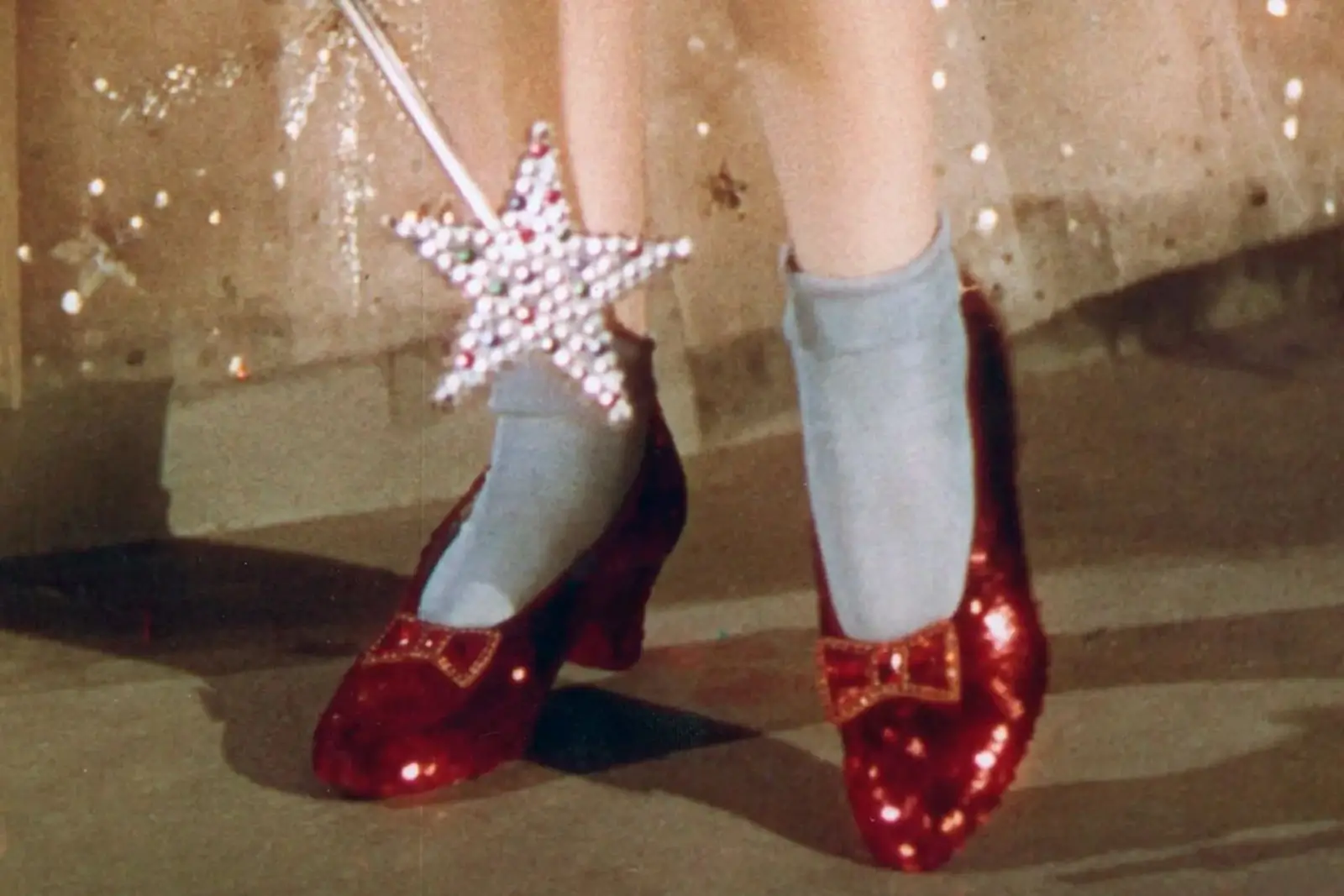
Image: mustafinmag.kz
One of the most valuable pairs of shoes ever sold is the ruby slippers worn by Judy Garland in The Wizard of Oz (1939). In 2000, a pair was auctioned for $660,000, making them one of the most expensive movie memorabilia items in history. Four pairs are known to exist, with one displayed at the Smithsonian National Museum of American History.
In 2018, another pair was recovered after being stolen from the Judy Garland Museum in 2005. These iconic shoes were handcrafted with sequins, felt soles, and red silk bows, designed to shimmer under Technicolor lighting.
5. Marie Antoinette Owned Over 500 Pairs of Shoes
Marie Antoinette, Queen of France (1774–1792), was infamous for her extravagant lifestyle, which included an extensive shoe collection. Historical records suggest she owned over 500 pairs, often made of silk, velvet, and embroidered with gold thread and jewels. These luxurious shoes symbolized the excesses of the French monarchy before the Revolution.
A pair of her silk shoes, embroidered with silver and gold, was auctioned in 2020 for €43,750 ($51,780). Her obsession with fashion, including footwear, contributed to the public perception of her extravagance, which ultimately fueled resentment during the French Revolution.
6. The Largest Shoe Measures Over 17 Feet Long
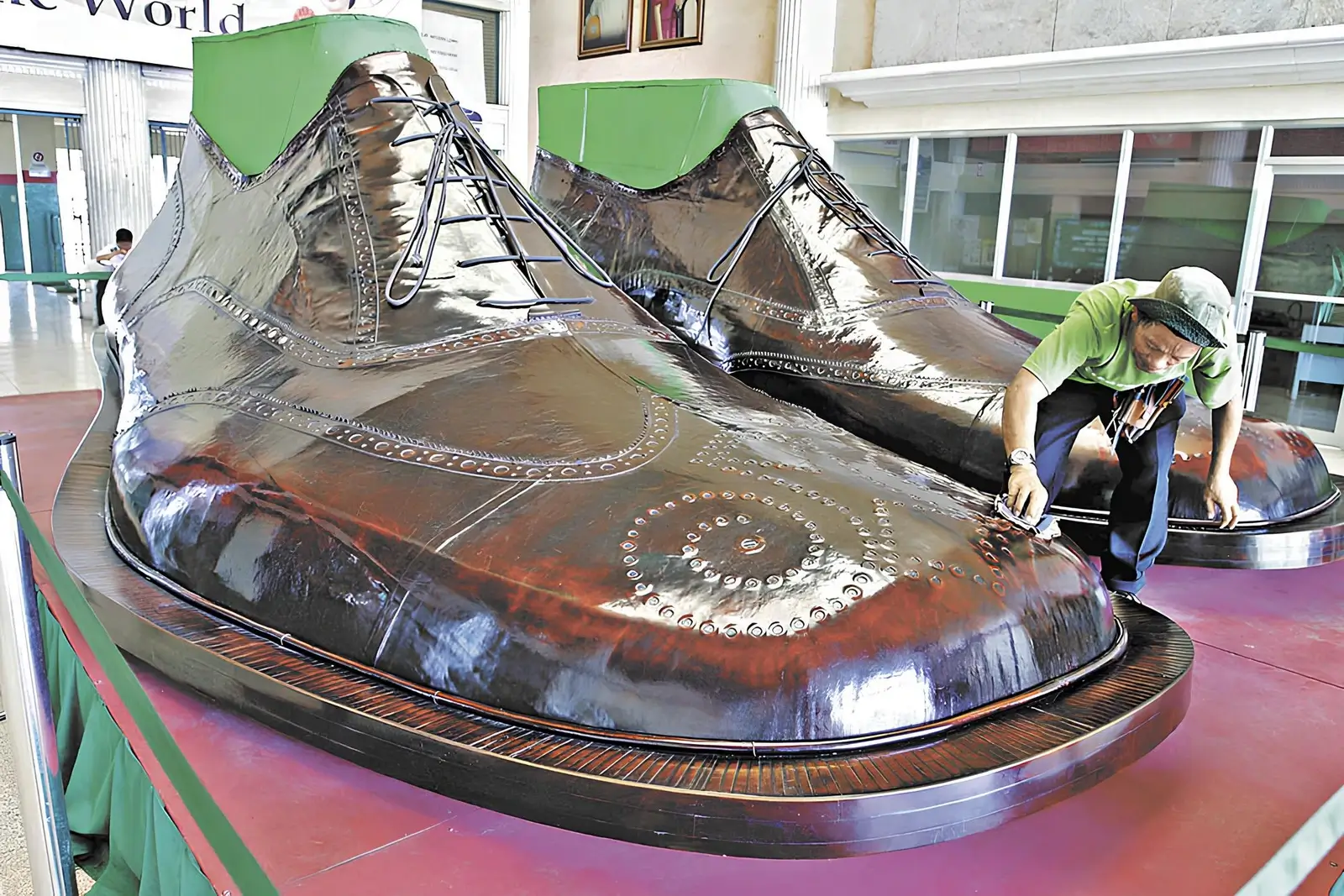
Image: 24ur.com
The world’s largest shoe, measuring 5.5 meters (17.9 feet) long and 2.5 meters (8.2 feet) wide, was created in Marikina, Philippines, in 2002. This massive leather shoe can fit 30 people inside and weighs over 600 kg (1,322 lbs).
Marikina is known as the “Shoe Capital of the Philippines,” producing around 70% of the country’s footwear. The giant shoe was crafted by local shoemakers to showcase their skills and attract tourists. It holds the Guinness World Record for the largest shoe ever made.
7. The Iconic Red Soles of Louboutin Shoes
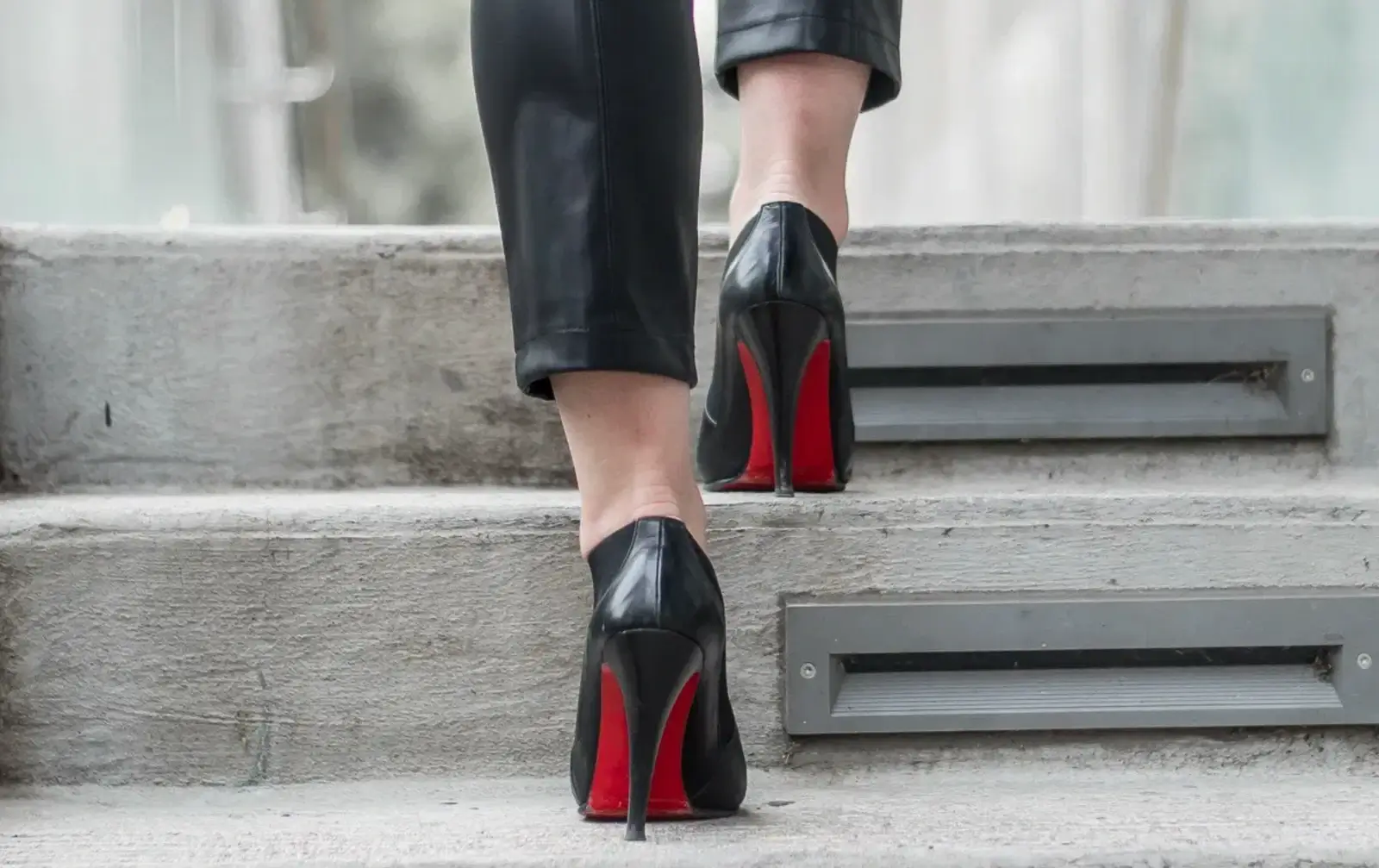
Image: theperennialstyle.com
Christian Louboutin’s red-soled shoes became a global fashion symbol after their accidental invention in 1993. Inspired by an Andy Warhol painting, Louboutin noticed something was missing from his shoe prototype. He grabbed a bottle of red nail polish from his assistant and painted the sole—creating the now-iconic look.
The signature red soles became a trademark in 2008 after legal battles with brands copying the design. A pair of Louboutin heels can cost anywhere from $700 to over $6,000, with limited-edition designs featuring hand-placed crystals and rare materials.
8. The Guinness World Record for the Tallest High Heels
The tallest high-heeled shoes commercially available are boots featuring a 43 cm (17 in) platform and a 51 cm (20 in) heel. These were produced by James Syiemiong of India for boldnbootiful.com in February 2004. These towering heels exemplify the extremes of fashion footwear, challenging both designers and wearers.
Creating such high heels requires meticulous engineering to ensure structural integrity and wearer balance. While not practical for everyday use, they highlight the innovative spirit within the fashion industry.
9. Sneakers Were First Advertised in 1917
The term “sneakers” emerged in the late 19th century, referring to rubber-soled shoes that allowed the wearer to “sneak” quietly. The first mass marketing of sneakers occurred in 1917 with the introduction of Keds by the U.S. Rubber Company. That same year, Converse released its All-Star basketball shoe, further popularizing the style.
These early sneakers featured canvas uppers and rubber soles, providing comfort and quietness. Their design revolutionized athletic footwear, leading to the vast array of sneaker styles and brands we see today.
10. The Average American Woman Owns 20 Pairs of Shoes
Studies have shown that the average American woman owns approximately 20 pairs of shoes. This collection often includes various styles such as flats, heels, sandals, and athletic shoes, reflecting diverse fashion preferences and functional needs.
This statistic highlights the significance of footwear in personal style and the fashion industry’s influence on consumer behavior. It also underscores the economic impact of the shoe market in the United States.
11. Imelda Marcos Owned Over 3,000 Pairs of Shoes
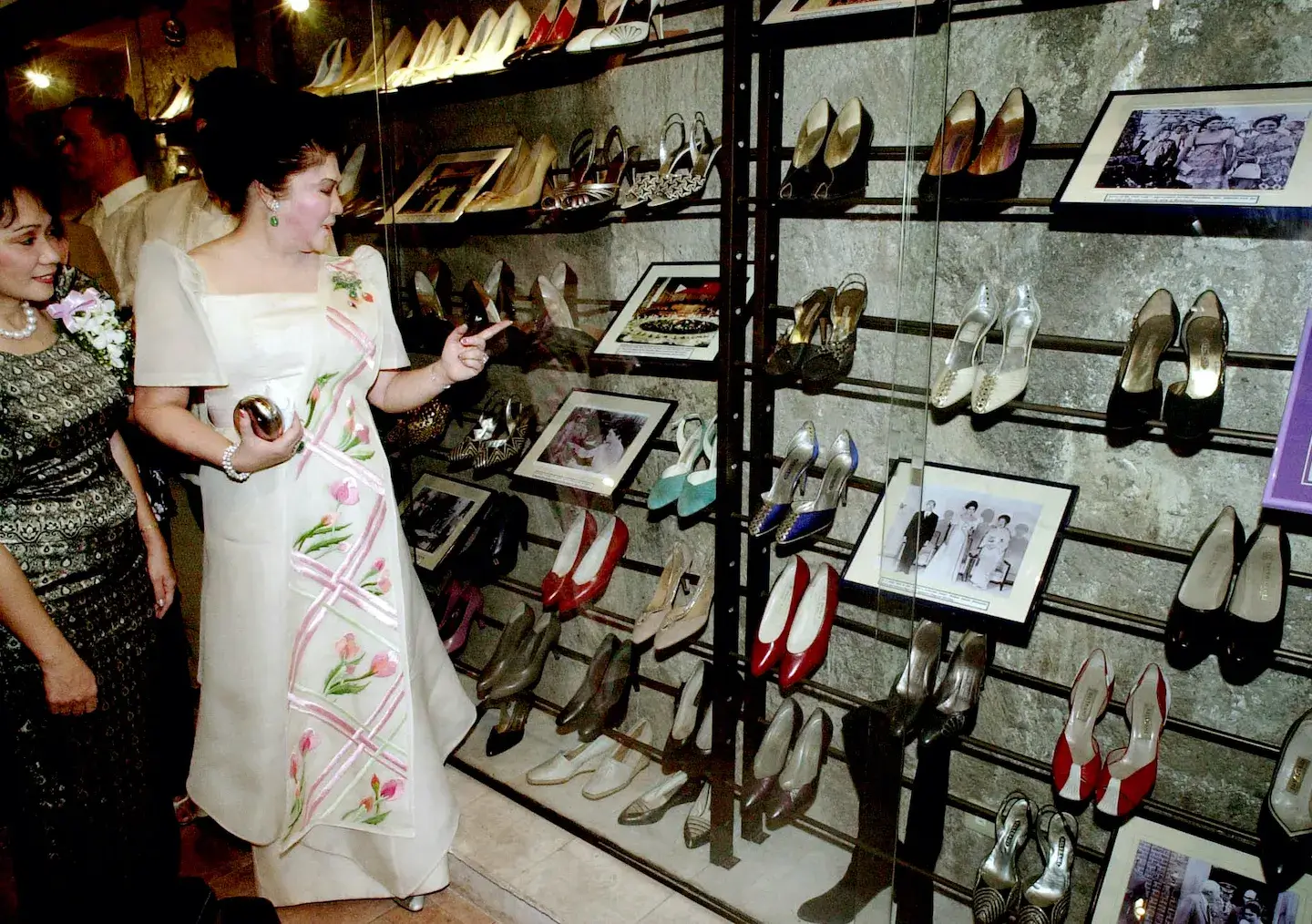
Imelda Marcos’s shoes displayed in the Marikina Shoe Museum. Image: vice.com
Former Philippine First Lady Imelda Marcos became infamous for her extravagant shoe collection, reportedly amassing over 3,000 pairs. Discovered after her husband’s ousting in 1986, the collection included luxury brands and bespoke designs.
The shoes symbolized the excesses of the Marcos regime amid widespread poverty in the Philippines. Many of these shoes are now displayed at the Marikina Shoe Museum, serving as a reminder of the country’s political history.
12. The First Left and Right Shoes Appeared in the 19th Century
Prior to the 19th century, shoes were typically made without distinction between left and right feet; these were known as “straights.” This practice persisted from the 16th century until the early 19th century.
Grunge
The shift towards anatomically distinct left and right shoes began in the early 19th century, with Philadelphia shoemakers leading the innovation. By the 1850s, this design became widespread, enhancing comfort and fit for wearers.
13. The World’s Most Expensive Sneakers Sold for $1.8 Million
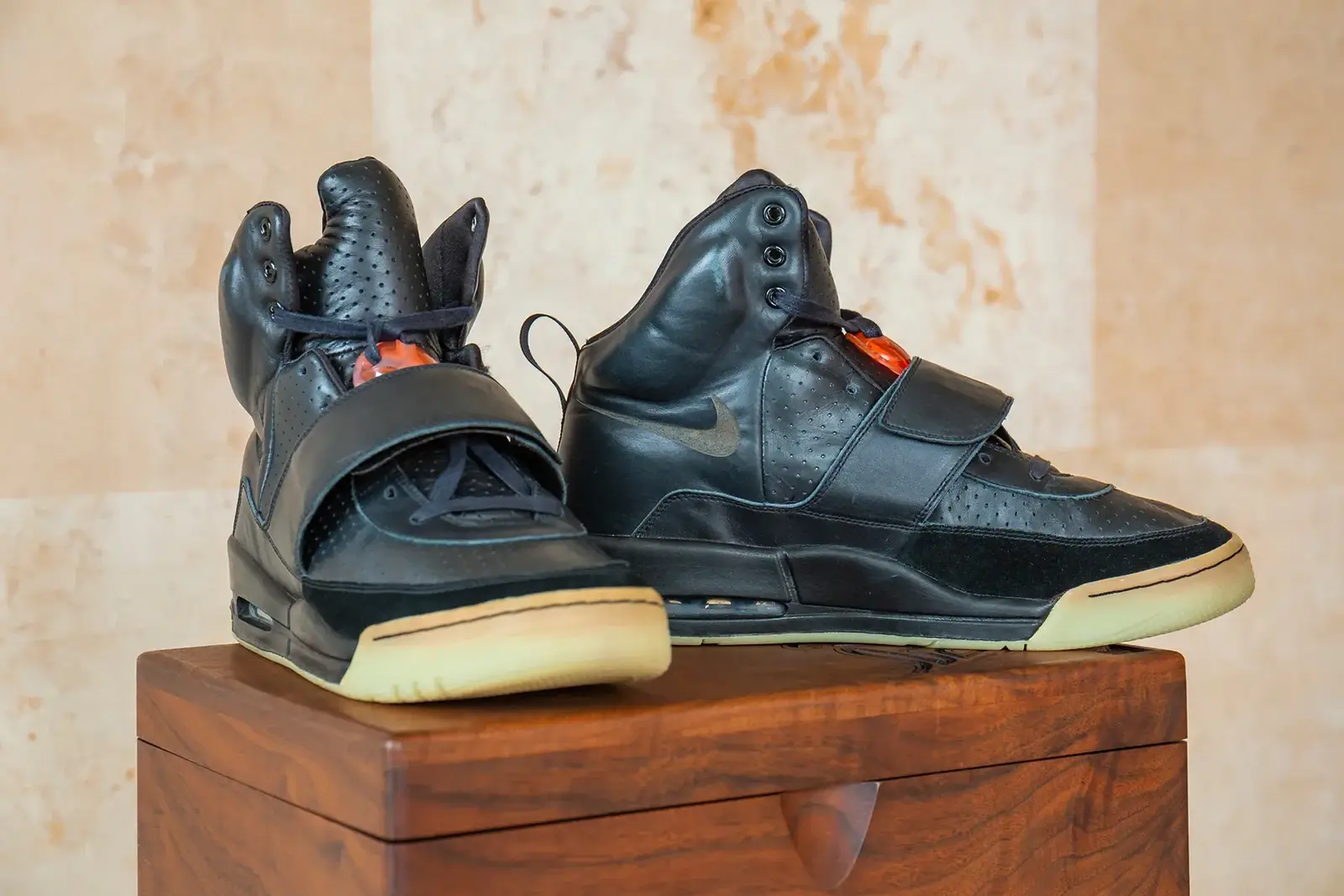
$1.8 million Nike Air Yeezy 1 Prototypes. Image: rollingstone.com
In April 2021, a pair of Kanye West’s Nike Air Yeezy 1 Prototypes sold for $1.8 million, setting a record for the most expensive sneakers ever sold. These size 12 sneakers, worn by West during his performance at the 2008 Grammy Awards, were purchased by sneaker investing platform RARES via a private sale.
This sale underscored the growing market for rare and collectible sneakers, elevating them to the status of high-value art pieces. The Air Yeezy 1 Prototypes’ unique design and association with a prominent cultural moment contributed to their unprecedented valuation.
14. The First Doc Martens Were Made from Recycled Materials
Dr. Martens boots, known for their durability and distinctive design, were originally crafted using surplus military materials. In 1945, German army doctor Klaus Märtens created the first pair using discarded rubber from Luftwaffe airfields for the soles and reclaimed leather for the uppers. This resourceful use of materials was driven by post-war shortages and Märtens’ need for comfortable footwear following a foot injury.
Today, Dr. Martens continues to emphasize sustainability by incorporating recycled materials into their products. For instance, their classic heel loops are made from 100% recycled materials, and their shoeboxes are fully recyclable, made from 100% recycled materials and printed with soy ink.
15. The Term “Shoe” Comes from Old English
The English word “shoe” originates from the Old English term “sċōh,” which referred to a covering for the foot. This term is derived from the Proto-Germanic “skōhaz,” indicating a common linguistic ancestry among Germanic languages.
The etymology reflects the essential function of shoes as protective coverings, a concept that has remained consistent across cultures and eras. Understanding the linguistic roots of “shoe” offers insight into the historical significance of footwear in human society.
16. The First Athletic Shoes Were Called Plimsolls
In the early 19th century, the introduction of rubber-soled footwear marked a significant advancement in shoe design. These shoes, known as “plimsolls,” featured a canvas upper and a rubber sole, providing a lightweight and flexible option suitable for various athletic activities.
The name “plimsoll” is believed to have been inspired by the Plimsoll line on ships, as the horizontal band on the shoe resembled this maritime marking. This design not only influenced modern athletic footwear but also led to the development of specialized sports shoes, laying the foundation for today’s sneaker industry.
17. The Largest Shoe Collection Consists of Over 15,000 Items

Darlene Flynn’s extensive shoe collection. Image: behance.net
As of March 2012, Darlene Flynn from the USA held the Guinness World Record for the largest collection of shoe-related items, amassing an astonishing 15,665 different pieces since she began collecting in 2000.
Flynn’s extensive collection includes a diverse array of shoe-themed memorabilia, reflecting her passion for footwear and its cultural significance. Her dedication highlights the profound impact shoes have on fashion and personal expression.
FAQ
Why is a shoe called a shoe?
The word “shoe” comes from the Old English term “sċōh,” which was derived from the Proto-Germanic “skōhaz.” This linguistic root is shared across several Germanic languages, indicating a long-standing history of footwear in human culture.
The term has remained largely unchanged for centuries, reflecting the essential function of shoes as protective coverings for the feet. The word evolved as different cultures developed various footwear styles suited to their needs.
What are some facts about the first shoes?
The oldest known shoes were discovered in Armenia, dating back 5,500 years. Made from a single piece of leather, these shoes were tightly laced for a snug fit.
Earlier evidence of footwear comes from a 10,000-year-old footprint found in Oregon, which shows signs of a woven sandal. Prehistoric humans likely wrapped animal hides around their feet for warmth and protection.
What is the most important thing about shoes?
Shoes primarily serve to protect feet from harsh surfaces, extreme temperatures, and injuries. Proper footwear provides support, balance, and comfort, reducing strain on the body.
Beyond function, shoes play a significant role in fashion, culture, and status. Historically, certain styles and materials were reserved for royalty or specific social classes, making shoes a symbol of wealth and identity.
Who originally made shoes?
Shoemaking dates back at least 10,000 years, with early humans crafting simple sandals and leather wraps for foot protection. The first structured shoes appeared in Mesopotamia and Egypt, where artisans wove plant fibers and worked with animal hides.
In medieval Europe, shoemakers, known as cordwainers, specialized in crafting high-quality leather footwear. The profession became highly respected, leading to the formation of guilds that regulated shoemaking standards.





